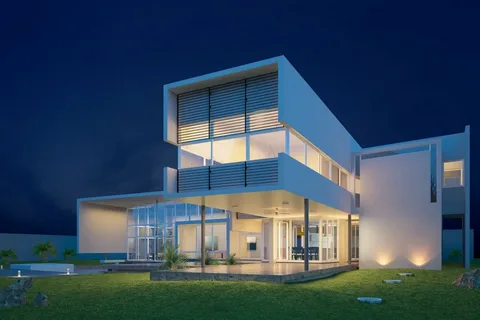Digital Rendering has taken over everything around us, as there are several Types of 3D Rendering are now involved in almost every industry. Whether it is movies, marketing, advertisements, and much more. But that is not what we will be aiming to discuss in this article.
This article will help you unveil how these types are revolutionizing the world of building architecture and design. The extent of realism in visualizations provided by 3D rendering is so realistic that you would not be able to tell the difference.
3D Rendering – Transforming a Vision into Reality
It is a process of generating a two-dimensional photorealistic image from a 3D scene using CAD software. The output of this process can be in the form of an image or a dynamic and realistic visual, depending on the need. The 3D rendering tools used in this process enable designers to input any kind of detail to achieve the desired degree of real-time realism.
Types of 3D Rendering
Let’s explore the most significant 3D rendering types:
- Interior Rendering
The focus of this 3D rendering type is on interior design. From textures, materials, lighting, to space, furniture, and color schemes, it covers everything that is linked with interior design.
Who uses this the most?
Interior designers, architects, furniture developers, and real estate agents are the most frequent users of this rendering type.
- Exterior Rendering
This rendering deals with the lighting, shadowing, and landscape for the exterior of a building. Thus, helping a client to have a better visual understanding of a design.
Where is it mostly used?
It is mostly used by real estate developers to market their property listings, and also by professionals for their clients’ presentations.
- Bird’s-Eye Rendering
Also goes with the name of aerial rendering; this is an extended version of exterior rendering. This is because it not only shows the exterior design or architectural details, but also provides visuals about the surrounding environment.
Which professionals use this?
The most common users of this 3D rendering are real estate agents to showcase properties with their surroundings and urban development planners.
- 3D Walkthrough Rendering
A particular type of rendering that creates 3D animated tours of an environment or a space that is created virtually. The viewer can visually experience the space as if they are physically present and walking through. In other words, it is a virtual walking tour provided from multiple angles, covering almost every aspect.
Who are the primary users?
Because of this rendering’s outstanding visual realism, this is used by real estate agents, interior designers and architects, and urban planners.
- 3D Product Rendering
The principles in which 3D rendering tools work to create photorealistic visuals of a design or architecture can also be applied to a product. By applying the same specific materials, textures, and colors for a product, 3D rendering tools can yield a real-time 3D model of a product.
Who uses it?
3D product rendering is used by a variety of industries. From furniture manufacturers to electronics and the automotive industry, and more. This is because they can visually showcase a product even without having it tangibly.
- Augmented and Virtual Reality Rendering
This 3D rendering type puts a viewer in a digitally simulated world. Where augmented reality helps experts to create a life-like 3D model, and virtual reality allows them to move around in any direction.
Who frequently uses this rendering?
This advanced rendering is used by architects and designers the most. It helps them to showcase what a client has demanded from them and how well they can capture a client’s vision.
3D Rendering Platforms – Providing Innovative Possibilities
3D Rendering Services performed by 3D rendering platforms make all of the above possible. These platforms are known for their versatility by offering a wide range of features. Some top-of-the-line 3D rendering platforms are:
- Autodesk 3Ds Max
- V-Ray
- Maya
- Corona
- SketchUp
- Enscape
- Lumion
- Unreal Engine
- AutoCAD
- Revit
Top of the list rendering firms, such as SMA Archiv, utilize these tools for the following reasons:
- They provide exceptionally realistic visuals
- Also, with enhanced visuals, error detection becomes quite easy
- The decision-making process, because of improved visuals, becomes quicker
- With these 3D rendering tools, any element can be customized instantly
- Lastly, it is cost-saving as it eliminates the need for physical prototypes.
End Note
This article will help you obtain all the necessary information about various Types of 3D Rendering. In this article, you can gain access to thorough information about some of the most important types. Also, information about the users of each type of rendering and the 3D rendering tools that make it possible has been extensively discussed. So, by reading this article, you will have valuable knowledge about how a concept is turned into a reality.

